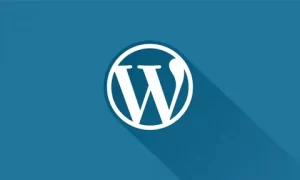- Temmuz 25, 2024
- by admins
- Web Tasarım
- 0 Yorum
WordPress Site Hızını Optimize Etmek Için 10 İpucu
WordPress sitenizin hızını optimize etmek, kullanıcı deneyimini artırmak ve arama motorlarında daha iyi sıralama almak için önemlidir. İşte size WordPress site hızınızı optimize etmek için 10 ipucu:
1. Temanızı basitleştirin: Karmaşık temalar, sitenizin yavaşlamasına neden olabilir. Basit bir tema seçerek, site hızınızı artırabilirsiniz.
2. Önbellekleme kullanın: Önbellek kullanarak, sitenizin sayfalarının daha hızlı yüklenmesini sağlayabilirsiniz. Bu, kullanıcıların siteyi daha hızlı açmasına yardımcı olur.
3. Eklentileri azaltın: Çok sayıda eklenti, sitenizin yüklenme süresini yavaşlatabilir. Sadece ihtiyacınız olan eklentileri kullanın.
4. Resimleri sıkıştırın: Büyük resimler, sitenizin yavaşlamasına neden olabilir. Resimleri sıkıştırarak, yükleme hızını artırabilirsiniz.
5. CDN kullanın: İçerik dağıtım ağı (CDN), sitenizin yüklenme süresini azaltabilir. CDN kullanarak, site performansınızı iyileştirebilirsiniz.
6. Cache kullanın: Cache kullanarak, sitenizin yüklenme süresini azaltabilirsiniz. Bu, site performansınızı artırabilir.
7. Gereksiz JavaScript dosyalarını kapatın: Gereksiz JavaScript dosyaları, sitenizin yavaşlamasına neden olabilir. Bu tür dosyaları kapatarak, site performansınızı artırabilirsiniz.
8. Sayfa boyutlarını azaltın: Büyük sayfalar, sitenizin yüklenme süresini yavaşlatabilir. Sayfa boyutlarını azaltarak, site hızınızı artırabilirsiniz.
9. Kalitesiz barındırma sağlayıcılarından kaçının: Kalitesiz barındırma, sitenizin yavaşlamasına neden olabilir. İyi bir barındırma sağlayıcısı seçerek, site hızınızı artırabilirsiniz.
10. Güncellemeleri yapın: Güncellemeler, sitenizin hızını ve güvenliğini artırabilir. WordPress sürümünüzü ve eklentilerinizi düzenli olarak güncelleyin.

Bu ipuçları, WordPress sitenizin hızını optimize etmenize yardımcı olacaktır. Site hızınızı artırarak, kullanıcı deneyimini geliştirebilir ve arama motorlarındaki sıralamanızı iyileştirebilirsiniz.As we all know, optimizing a website’s speed is crucial not only for improving user experience but also for boosting search engine rankings. In the previous article, we covered 10 tips for optimizing WordPress site speed. But there are still some more strategies that can be used to improve your website’s performance.
1. Mobile Optimization: With more and more people accessing websites on their mobile devices, it’s essential to ensure your website is optimized for mobile use. This means having a responsive design, fast loading times, and easy navigation.
2. Minimize HTTP Requests: Each element on your website requires an HTTP request to load, including images, stylesheets, and scripts. The more HTTP requests your website has, the longer it takes to load. By minimizing these requests, you can significantly improve your site’s speed.
3. Use Lazy Loading: Lazy loading is a technique that allows you to defer the loading of non-critical resources such as images until they are needed. This can significantly reduce your site’s initial page load time and improve the user experience.
4. Optimize Images: Images can significantly slow down your website. By optimizing your images, you can reduce their size without sacrificing quality. Techniques such as compressing images, using the right file format, and reducing image sizes can all help improve your site’s speed.
5. Use Browser Caching: Browser caching allows your website to store frequently used resources on a user’s device, reducing the number of requests made to the server. This can lead to faster load times and improved performance.
6. Use GZIP Compression: GZIP compression is a technique that reduces the size of your website’s files before they are sent to the browser. This can significantly reduce the amount of data a user needs to download, resulting in faster load times.
7. Use a Content Delivery Network (CDN): A CDN can help distribute your website’s content across multiple servers, reducing the distance between the user and the server. This can significantly reduce the time it takes for your website to load.
8. Minimize Redirects: Redirects can add significant overhead to your site, slowing down the overall load time. By minimizing redirects or avoiding them altogether, you can improve your site’s performance.
9. Optimize Your Code: Optimizing your code involves reducing its size and complexity, making it easier for browsers to interpret and display. This can lead to faster load times and improved performance.
10. Monitor Your Site’s Performance: Regularly monitoring your site’s performance can help you identify areas that need improvement. Use tools like Google’s PageSpeed Insights and GTmetrix to analyze your site’s speed and get recommendations for improvement.
By following these additional tips, you can further optimize your website’s speed and improve your user experience. Remember, a fast website is essential for both users and search engines, so don’t neglect this important aspect of SEO.In conclusion, optimizing your website’s speed is an ongoing process that requires continuous attention and effort. By implementing the tips we’ve discussed in this article, you can significantly improve your site’s performance and user experience. Remember to regularly monitor your site’s performance and make adjustments as necessary. A fast-loading website not only improves user experience but also helps boost search engine rankings, so don’t neglect this important aspect of SEO. With a little effort and dedication, you can create a website that users love and search engines rank highly.



